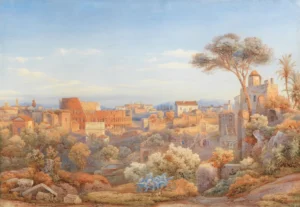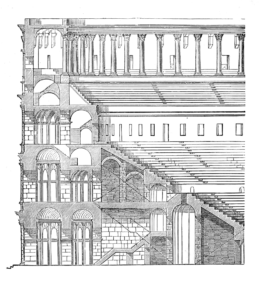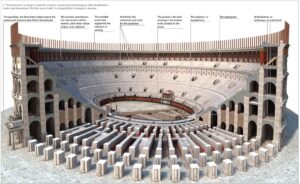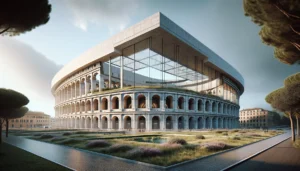Architectural Wonders: The Colosseum

The Colosseum, also known as the Flavian Amphitheatre, is an architectural marvel and a testament to the ingenuity of ancient Roman engineering. Situated in the heart of Rome, Italy, it stands as a symbol of the Roman Empire’s grandeur, showcasing the sophistication and ambition of Roman architecture. This blog post delves into the architectural wonders of the Colosseum, accompanied by supporting images that capture its timeless beauty and complexity.

Historical Background
Constructed under the Flavian emperors, Vespasian, Titus, and Domitian, between AD 70 and 80, the Colosseum was designed to host gladiatorial contests, mock sea battles, animal hunts, and various public spectacles. It could accommodate around 50,000 spectators, illustrating the scale and importance of entertainment in Roman society.
Architectural Marvels
1. Ingenious Design

The Colosseum’s design is a testament to Roman architectural innovation. It features an elliptical shape that optimizes visibility for every spectator and enhances acoustics, allowing the crowds’ cheers and the events’ sounds to resonate throughout the arena. The structure comprises four levels of arches, framed by half-columns that follow the classical orders: Doric, Ionic, and Corinthian, from bottom to top, showcasing the Romans’ mastery over architectural ornamentation.

2. Advanced Engineering
Roman engineers employed advanced construction techniques, including the extensive use of concrete and the arch, to build the Colosseum. These innovations allowed for the creation of a massive and durable structure that has withstood earthquakes, fires, and looting over millennia. The use of vaults and arches distributed the weight of the stone efficiently, enabling the construction of the colossal and airy spaces within.


3. Complex Infrastructure
The Colosseum’s underground area, known as the hypogeum, was a network of tunnels and cages where animals and gladiators were held before contests. It featured ingenious mechanisms, including elevators and trapdoors, that facilitated the dramatic appearances of animals and combatants in the arena, adding an element of surprise and spectacle to the events.
4. Architectural Influence

The Colosseum has influenced architectural design for centuries, inspiring the construction of modern sports stadiums and arenas around the world. Its emphasis on spectator experience, structural integrity, and aesthetic appeal continues to guide contemporary architecture.
The Colosseum remains one of the greatest architectural feats of the ancient world, reflecting the Roman Empire’s technological advancements and cultural priorities. Its enduring legacy as a symbol of architectural innovation and human ingenuity continues to captivate and inspire people across the globe.
To truly appreciate the architectural wonders of the Colosseum, one must see it through the lens of both its historical context and its lasting influence on architecture. Below are images that highlight the Colosseum’s magnificence, from its grand exterior arches to the intricate details of its interior spaces, capturing the essence of its architectural splendor.
With all that being said, what if the Colosseum was built today keeping in mind the demographic of ancient Rome?


Do you agree?

